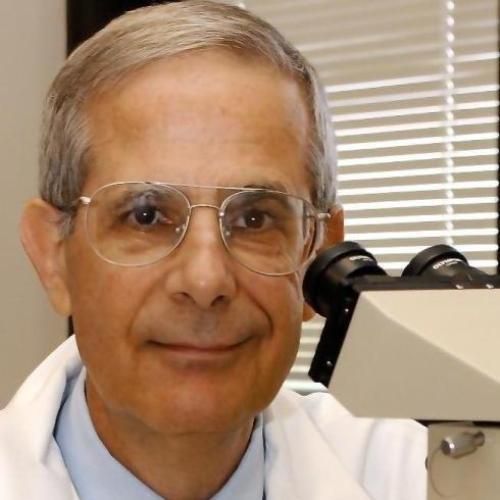Ruxolitinib in treatment of refractory hypereosinophilic syndrome.
Song, J; Song, M; Phan, V; Weinberg, JB; Palmares, TM; Lee, S; Mortara, L
Published in: Journal of Clinical Oncology
73 Background: Hypereosinophilic syndrome (HES) is a rare hematologic disorder in which the eosinophils proliferate and infiltrate and damage multiple organs. Without treatment, the condition is fatal, usually due to cardiac dysfunction, particularly left ventricular dysfunction. Jakafi is approved for myelodysplastic syndrome (MDS) and is effective in reducing splenomegaly. The medication is off-label for HES. This report demonstrates the successful treatment of HES with ruxolitinib. Methods: Case report. Results: A 77 year-old Asian male presented with sudden onset pruritus. There was no history of drug allergy or scabies. Past medical history included hypertension, benign prostatic hypertrophy, and early glaucoma. He had shingles 3 times in his 50's on his thorax. Initial CBC demonstrated elevated eosinophils of 36%. He was given oral prednisone by his allergist with minimal relief. He was prescribed interferon, which he could not tolerate due to purple fingernails and fatigue. He was referred to an allergist, who started oral prednisone. There was some relief. He was given interferon. This resulted in fatigue and purple fingernails and no improvement in the pruritus. A dermatologist prescribed hydroxyzine and fluocinolone cream. This provided minimal relief. He saw a 2nd dermatologist who performed a skin biopsy, which was negative. An oncologist found on bone marrow biopsy slight hypercellularity of 30-40% and increased eosinophilia of 16%. There was no evidence of leukemia, lymphoma, or MDS. Cytogenetic testing revealed the following: 46XY, del 9 (q13q22). Kappa/Lambda ratio was slightly elevated at 4.15. KIT mutation by PCR, T-cell clonality by PCR, and FISH panel were negative. Immunoglobulin testing revealed: IgA 140, IgG 1317, IgM 65, and IgE 358. The patient also saw an infectious disease specialist. HIV, ANA, serum tryptase, LDH, Vitamin B12,urine protein electrophoresis, parasitic work-up (trichinella, toxocara, strongyloides) was negative. Echocardiogram demonstrated an ejection fraction of 62%. The patient continued to have chronic pruritus with sleeplessness. In desperation, he attempted to discontinue his prostate medications in hopes that his condition was a simple allergy to medications, but this resulted in urinary retention with fever, sepsis, and anasarca, necessitating urgent antibiotic treatment. Although the patient was negative for the FIP1L1-PDGFRA mutation, a trial of imatinib (tyrosine kinase inhibitor) was given. Not surprisingly, there was no improvement in his symptoms or condition. The patient's symptoms worsened, so oral prednisone was increased from 20 to 80 mg. There was no improvement in his symptoms. Additional testing was obtained, revealing a JAK 2 kinase mutation. He was prescribed ruxolitinib 20 mg po bid. By the 3rd day, he could sleep a full night without pruritus. His prednisone was tapered; by one month, he had tapered off of his prednisone. He developed mild neutropenia, so ruxolinitib was decreased. He noted that when he missed even one dose of his ruxolitinib, the pruritus would recur. Most recent labs (4 years after initial presentation) revealed normal eosinophils of 2%. He had mild anemia and thrombocytosis, which were stable. Conclusions: This is the first case of HES treated with ruxolitinib. The patient had side effects from the standard treatments (prednisone, interferon, imatinib). Newer treatments should be available to patients who had documented HES to prevent delay in treatment and increased morbidity. Ruxolitinib is a potential treatment for HES who are intolerant of other treatments.

